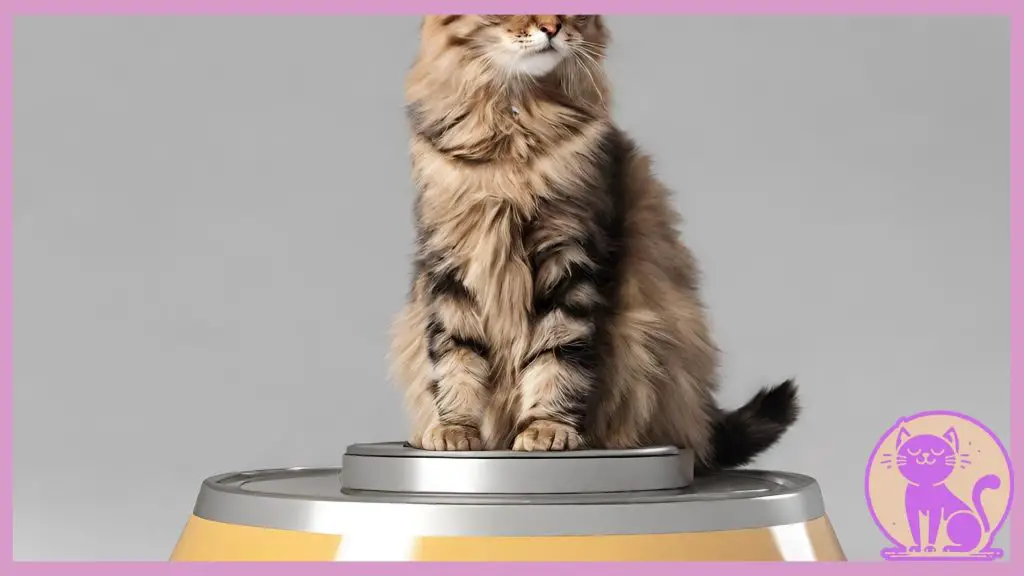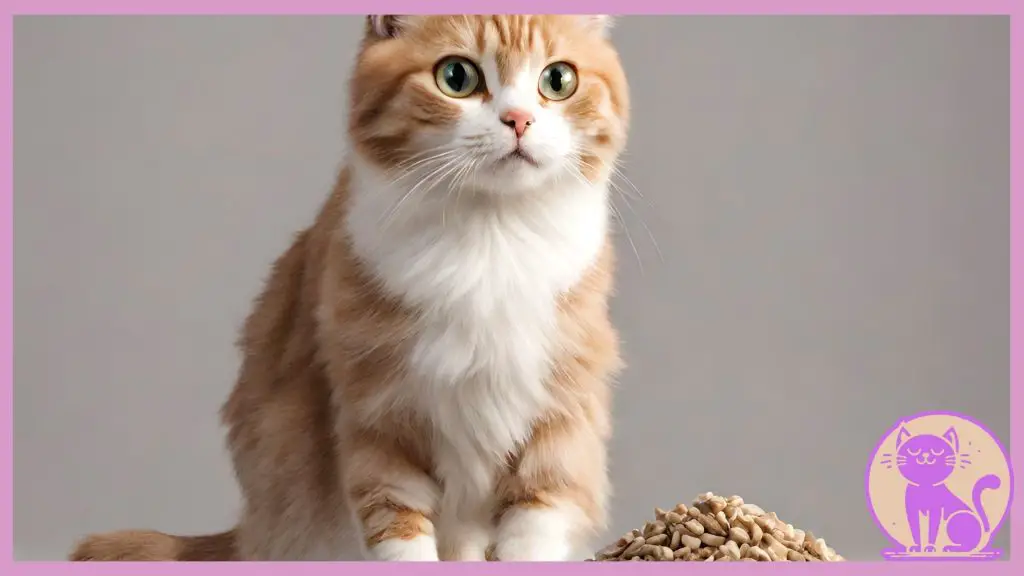Welcome to our comprehensive guide on achieving and maintaining a healthy weight for your beloved feline friends. Weight management plays a crucial role in ensuring your cats live long, happy, and active lives. In this article, we will delve into the world of cat weight management, discussing the importance of maintaining a healthy cat weight, understanding the basics of cat weight, the role of weight management, creating a balanced cat diet plan, incorporating exercise, overcoming challenges in weight loss, monitoring and adjusting your cat’s weight, seeking professional guidance, and tips for long-term weight maintenance.
When it comes to healthy cat weight, it’s not just about physical appearance – it’s about their overall well-being. Cats with an optimal weight are less prone to various health issues, including diabetes, arthritis, and heart disease. They have more energy, improved mobility, and a better quality of life. That’s why it’s vital to ensure your cat maintains a healthy weight throughout their life.
Throughout this guide, we will provide practical tips and insights to help you navigate the world of cat weight management. Whether your feline friend needs to shed a few pounds or maintain their current weight, we’ve got you covered. We’ll explore the importance of a balanced diet, incorporating exercise into their daily routine, and the challenges you may encounter along the way. Remember, consistency is key, and it’s always best to consult with a veterinarian for personalized advice and guidance tailored to your cat’s specific needs.
So, let’s embark on this journey together, and discover the secrets to achieving and maintaining a healthy cat weight. Are you ready to provide your furry companion with a long and vibrant life? Let’s get started!
Understanding the Basics of Cat Weight

Before diving into weight management strategies, it’s important to have a clear understanding of what constitutes a healthy weight for your feline companion. Maintaining an optimal weight is crucial for their overall well-being and longevity. Let’s explore how to determine your cat’s ideal weight and why feline weight control is so important.
How to Determine Your Cat’s Ideal Weight
To determine your cat’s ideal weight, it’s best to consult with your veterinarian. They will consider various factors such as your cat’s breed, age, body shape, and overall health to establish the optimal weight range. However, there are a few general guidelines you can use as a starting point.
One way to assess your cat’s weight is by examining their body condition. An ideal-weight cat should have a visible waistline, with their ribs easily felt but not prominent. If your cat has excess fat covering their ribs and their waistline is not distinguishable, they may be overweight. On the other hand, if their ribs are highly visible and their waistline is too defined, they may be underweight.
Another helpful tool is the Body Condition Score (BCS). Veterinarians use a scale of 1 to 9, with 1 being severely underweight and 9 being obese, to evaluate your cat’s body condition. A score of 4 or 5 indicates an optimal weight.
The Importance of Maintaining Cat Weight
Maintaining a healthy weight for your cat is vital for their overall well-being. Excess weight can lead to a variety of health issues, including diabetes, arthritis, heart disease, and decreased lifespan. Conversely, being underweight can indicate underlying health concerns and weaken their immune system.
By maintaining your cat’s weight within the optimal range, you can help prevent these health problems and ensure a higher quality of life for your furry friend. Regularly monitoring and controlling their weight will allow them to maintain optimal energy levels, mobility, and overall vitality.
Cat Weight Control: Tips and Insights
To effectively maintain your cat’s weight, it’s essential to establish healthy habits and make appropriate dietary adjustments. Here are a few tips and insights to help you on your journey of feline weight control:
- Feed a balanced, high-quality cat food that is appropriate for their life stage and activity level
- Avoid table scraps and excessive treats, as they can contribute to Kitten’s weight gain
- Ensure your cat gets regular exercise through playtime and interactive toys
- Monitor portion sizes and follow feeding guidelines provided by your veterinarian
- Consider incorporating weight management formulas or portion control feeding systems
Remember, maintaining an optimal weight for your cat is a long-term commitment. Regular check-ups with your veterinarian and adjusting their diet and exercise routine as needed will help ensure their weight stays within the healthy range and that they lead a happy and active life.
Importance of Weight Management

Maintaining a healthy weight in cats is crucial for their overall well-being. Weight management not only prevents various health issues but also improves their quality of life and reduces the risk of diseases. Cat weight tips are essential to ensure your feline friend stays fit and active.
Just like humans, cats can face a range of health problems due to excess weight. These include diabetes, arthritis, heart disease, and respiratory issues. When overweight, cats may also experience decreased mobility, reduced energy levels, and a compromised immune system.
Implementing a cat diet for weight loss is an effective way to address these concerns. Feeding your cat healthy cat food for weight management can help them shed pounds and maintain a healthy weight. It’s important to consult with your veterinarian to determine the appropriate caloric intake and to select a diet that suits your cat’s specific needs.
Weight management is not just about appearance; it directly impacts your cat’s well-being. By maintaining a healthy weight, your cat can enjoy a longer and happier life. Alongside a controlled diet, regular exercise is also crucial. Engaging your cat in playtime and providing opportunities for physical activity helps burn calories and promotes muscle tone, contributing to overall weight management.
In the next section, we will discuss practical strategies for creating a balanced cat diet plan that caters to weight loss while ensuring your cat receives all the necessary nutrients.
References:
- Catster. (2021). The Importance of Weight Management for Cats.
- Animal Health Foundation. (2021). Benefits of Weight Management in Cats.
- The Ohio State University Veterinary Medical Center. (n.d.). Feline Obesity Management.
Creating a Balanced Cat Diet Plan

Achieving a healthy weight for your cat goes beyond just portion control. It requires creating a balanced diet plan that promotes weight loss while ensuring your feline friend receives all the essential nutrients. Here are some practical tips to help you design a cat diet plan that supports their weight management journey:
1. Choose Quality Cat Food
When selecting cat food, opt for high-quality options that provide the necessary nutrients without excessive calories. Look for brands that offer a balanced blend of proteins, healthy fats, and carbohydrates. A reputable brand such as **Hill’s Science Diet** or **Royal Canin** can be a good starting point.
2. Portion Control
Measure your cat’s food accurately to ensure portion control. Consult with your veterinarian to determine the appropriate portion size for your cat’s weight loss goals. Keep in mind that cat food packaging guidelines are often general recommendations and may not apply to every individual cat.
3. Include Lean Proteins
Proteins are essential for cats to maintain muscle mass while losing weight. Include lean sources of protein such as chicken, turkey, or fish in their diet. Avoid fatty meats or processed protein sources.
4. Incorporate Fiber-rich Foods
Fiber can help your cat feel fuller for longer and promote healthy digestion. Add small amounts of fiber-rich foods like cooked pumpkin or green beans to their meals. Always introduce new foods gradually to avoid digestive upset.
5. Limit Treats and Table Scraps
Treats and table scraps can quickly add up in calories, hindering your cat’s weight loss progress. Limit these extras and choose low-calorie, nutritious treats that are specifically formulated for cats.
6. Regular Meal Times
Establish a regular feeding schedule for your cat to prevent overeating and maintain consistency. Stick to designated meal times rather than free-feeding throughout the day.
7. Monitor Weight and Adjust as Needed
Weigh your cat regularly to track their progress. If they are not losing weight at the desired rate, consult with your veterinarian to adjust their diet plan accordingly. Weight loss should be gradual and not too rapid, ensuring your cat’s overall health is not compromised.
| Food Group | Food Examples |
|---|---|
| Proteins | Chicken, Turkey, Fish |
| Carbohydrates | Rice, Sweet Potatoes |
| Fiber Sources | Pumpkin, Green Beans |
A well-designed cat diet plan can make a significant difference in your cat’s weight management journey. You should to consult with your veterinarian for personalized advice.
The Role of Exercise in Cat Weight Management

Regular exercise plays a vital role in maintaining a healthy weight for cats. Along with a balanced diet, physical activity helps felines manage their weight and promotes overall well-being. Here, we’ll explore the benefits of incorporating exercise into your cat’s routine and provide tips for implementing an effective cat exercise routine.
The Benefits of Regular Physical Activity for Cats
Engaging your cat in regular exercise offers numerous benefits that contribute to their weight management and overall health. Here are some key advantages:
- Calorie burn: Physical activity helps cats burn calories, facilitating weight loss or maintenance.
- Muscle tone: Exercise aids in building and maintaining muscle mass, promoting a lean physique.
- Improved digestion: Regular movement supports healthy digestion and prevents gastrointestinal issues.
- Joint health: Physical activity helps keep joints limber and reduces the risk of arthritis.
Tips for Implementing an Effective Cat Exercise Routine
When designing an exercise routine for your cat, consider their individual needs, preferences, and health condition. Here are some tips to help you get started:
- Vary activities: Offer a mix of interactive play sessions, climbing structures, and toys to keep your cat engaged.
- Schedule playtime: Set aside specific times each day to engage in play and exercise with your feline friend.
- Use puzzle toys: Provide mentally stimulating toys that encourage your cat to move and work for their treats.
- Encourage vertical movement: Offer cat trees or shelves to encourage climbing, jumping, and exploration.
- Engage with toys: Use interactive toys that mimic prey-like movements to stimulate your cat’s natural hunting instincts.
Remember to start slow and gradually increase the intensity and duration of exercise sessions to prevent overexertion. It’s also essential to monitor your cat’s behavior and consult with your veterinarian if you have any concerns about their exercise routine.
Understanding the Challenges of Cat Weight Loss
Weight loss in cats can be a challenging process. Just like humans, cats may encounter various obstacles along their weight loss journey. However, with the right strategies and approach, these challenges can be overcome and pave the way for a healthier feline friend.
1. Slow and Steady Wins the Race
One of the most important cat weight loss tips is to avoid rapid weight loss. Cats should aim to lose weight gradually to prevent any adverse effects on their health. Rapid weight loss can lead to muscle loss and other complications. Instead, focus on sustainable lifestyle changes that promote healthy weight loss over time.
2. Providing a Balanced Diet
When it comes to cat weight loss, a balanced diet is key. Ensure that your cat is consuming the right amount of calories for their weight loss goals. Consult with your veterinarian to determine the appropriate portion sizes and choose cat foods that are specifically formulated for weight management. These foods are typically lower in calories and higher in essential nutrients to support your cat’s overall health.
3. Active Playtime
Encouraging regular physical activity is crucial for maintaining your cat’s weight. Engage your feline friend in interactive play sessions using toys that promote exercise and movement. Consider investing in puzzle toys or treat dispensers that require your cat to be active while obtaining their treats. This helps burn calories and keeps them mentally stimulated as well.
4. Regular Monitoring
Monitoring your cat’s weight allows you to make necessary adjustments to their diet and exercise routine to ensure continuous progress towards their weight loss goals.
By addressing these common challenges and implementing effective strategies, you can help your cat achieve and maintain a healthy weight. Remember, every cat is unique, so it’s important to consult with your veterinarian for personalized advice and guidance throughout your cat’s weight loss journey.
Monitoring and Adjusting Your Cat’s Weight

Once you have implemented a weight management plan for your cat, it is important to regularly monitor their weight and make necessary adjustments. This ensures that they stay within the healthy weight range and achieve optimal results in their feline weight management journey.
Tracking Progress
One of the key aspects of maintaining your cat’s weight is tracking their progress. Regularly measure their weight using a reliable scale and record it in a journal or a spreadsheet. By keeping a record, you can easily monitor any fluctuations and identify trends over time.
In addition to weight, it is also helpful to monitor your cat’s body condition. This can be done by assessing their overall appearance and feeling their ribs. A healthy weight cat should have a defined waistline and be able to feel their ribs without excess fat covering them.
Making Necessary Adjustments
Based on your cat’s weight and body condition, you may need to make adjustments to their diet and exercise routine. If your cat is losing weight too quickly or not progressing towards their ideal weight, you may need to increase their calorie intake or adjust their exercise regimen to prevent excessive weight loss. On the other hand, if your cat is not losing weight or is gaining weight, you may need to reduce their calorie intake and increase their exercise.
Consulting with your veterinarian is crucial in determining the appropriate adjustments for your cat. They can provide guidance and personalized recommendations based on your cat’s specific needs and health conditions.
Weight Monitoring and Adjustment Guidelines
| Weight | Body Condition | Action |
|---|---|---|
| Within the ideal range | Healthy weight with defined waistline, ribs can be felt | Maintain the current diet and exercise routine |
| Weight loss too fast or not progressing | Visible weight loss, excessive rib prominence | Increase calorie intake, adjust exercise routine |
| No weight loss or weight gain | Excess body fat, no defined waistline, difficulty feeling ribs | Reduce calorie intake, increase exercise |
By monitoring your cat’s weight and body condition and making necessary adjustments, you can successfully maintain their healthy weight and effectively manage their feline weight.
Seeking Professional Guidance for Cat Weight Management
If you’re unsure about how to approach your cat’s weight management or if your cat has specific health conditions, it’s always best to consult with a veterinarian. Seeking professional guidance is an essential step in ensuring the success of your cat’s weight management journey.
The Expertise of Veterinarians
Veterinarians are trained professionals who specialize in the health and well-being of animals, including cats. When it comes to cat weight management, veterinarians have the knowledge and experience to provide personalized advice and guidance tailored to your cat’s specific needs.
They can assess your cat’s current weight, body condition score, and overall health to determine an ideal weight range. With this information, they can recommend an appropriate diet plan, exercise routine, and any necessary adjustments to help your cat achieve and maintain their ideal weight.
Addressing Unique Health Conditions
Some cats may have underlying health conditions that can impact their weight or require special considerations when developing a weight management plan. These conditions could include metabolic disorders, thyroid issues, or gastrointestinal problems.
A veterinarian can conduct thorough examinations, run diagnostic tests, and provide expert insights into managing your cat’s weight while addressing their specific health condition. By involving a veterinarian in your cat’s weight management journey, you can ensure that their health is carefully monitored and any necessary adjustments are made along the way.
Maintaining Optimal Health
Consulting with a veterinarian for cat weight management extends beyond just reaching an ideal weight. They can also provide guidance on maintaining your cat’s overall health and well-being in the long term.
Veterinarians can advise on proper nutrition, preventive care, and additional strategies to keep your cat healthy and happy. Regular check-ups and consultations with a veterinarian will help ensure that your cat’s weight management plan remains effective and that any new health concerns are addressed promptly.
Benefits of Professional Guidance in Cat Weight Management
| Benefits | Explanation |
|---|---|
| Expert knowledge | Veterinarians possess specialized knowledge and experience in cat weight management, allowing them to provide accurate and expert advice. |
| Personalized approach | By assessing your cat’s individual needs, veterinarians can tailor a weight management plan that is specific to their unique circumstances. |
| Addressing health conditions | Veterinarians can identify and address any underlying health conditions that may impact your cat’s weight, ensuring a comprehensive approach to their well-being. |
| Monitoring and adjustments | Regular consultations with a veterinarian allow for ongoing monitoring of your cat’s weight, ensuring that adjustments can be made as needed. |
| Long-term health | With professional guidance, you can establish a sustainable plan that promotes not only weight management but also the overall health of your cat. |
By seeking professional guidance for cat weight management, you can give your feline companion the best chance of achieving and maintaining their ideal weight. Remember, the expertise of a veterinarian is invaluable in ensuring the health and well-being of your beloved cat.
Tips for Maintaining a Healthy Weight Long-Term
Maintaining a healthy weight for your cat in the long-term requires consistency, monitoring, and adjustments to their diet and exercise routine. By following these tips, you can ensure your feline companion stays fit, active, and in optimal health.
The Importance of Consistency
Consistency is key when it comes to maintaining your cat’s weight. Stick to a regular feeding schedule and provide them with balanced meals that meet their nutritional needs.
Monitoring their Weight
Regularly monitor your cat’s weight to detect any changes early on. Use a digital scale to weigh them at least once a month and keep track of their progress. Consult with your veterinarian if you notice any significant weight fluctuations.
Diet Adjustments
Adjust your cat’s diet as needed to support their weight maintenance goals. Consider switching to a weight management cat food that is low in calories and fat while still providing all the essential nutrients. Remember to introduce dietary changes gradually to avoid digestive issues.
Exercise and Playtime
Engage your cat in daily exercise and play sessions to help them burn calories and maintain a healthy weight. Provide interactive toys, climbing structures, and opportunities for them to engage in natural hunting behaviors. Tailor the activities to your cat’s age, abilities, and interests.
| Additional Tips for Maintaining a Healthy Weight | |
|---|---|
| 1 | Limit treats and snacks. Opt for low-calorie options or use their regular kibble as treats during training sessions. |
| 2 | Monitor their water intake. Ensure they have access to fresh water at all times and encourage proper hydration. |
| 3 | Incorporate mental stimulation. Provide puzzle toys or food-dispensing toys to keep your cat mentally engaged. |
| 4 | Regularly groom your cat. Brushing their fur and keeping them clean can help you detect any changes in their body condition. |
By implementing these strategies and maintaining a healthy lifestyle for your cat, you can ensure they achieve and maintain their ideal weight, promoting their overall well-being and quality of life.
Conclusion
Ensuring that your cat maintains a healthy weight is essential for their overall well-being. By following the tips and insights provided in this article, you can provide your feline friend with a happier and more active life. Remember to consult with your veterinarian for personalized advice and guidance on your cat’s weight management journey.
FAQ
Q: What is the ideal weight range for cats?
A: The ideal weight range for cats can vary depending on their breed, size, and body structure. Generally, adult cats should aim to maintain a weight between 8 to 10 pounds. Consult with your veterinarian to determine the optimal weight range for your specific cat.
Q: How can I determine if my cat is overweight?
A: You can determine if your cat is overweight by feeling their ribs. If you cannot feel their ribs easily with gentle pressure, or if you notice excess fat around their abdomen, they may be overweight. Additionally, monitoring their body shape and consulting with a veterinarian can help assess their weight status.
Q: Why is weight management important for cats?
A: Weight management is crucial for cats as it helps prevent the risk of diseases such as diabetes, arthritis, and heart problems. Maintaining a healthy weight also promotes overall well-being, increases energy levels, and reduces the stress on their joints and organs.
Q: What should be included in a balanced cat diet plan?
A: A balanced cat diet plan should include high-quality, protein-rich cat food that meets their nutritional needs. It is essential to provide a variety of nutrients while controlling calorie intake. Consult with your veterinarian to design a customized diet plan for your cat’s weight management goals.
Q: How much exercise does a cat need for weight management?
A: Cats should engage in at least 15-20 minutes of exercise per day. Regular play sessions, interactive toys, and engaging them in activities that promote physical movement can help burn calories and maintain a healthy weight. Consult with your veterinarian for exercise recommendations suitable for your cat’s age and health condition.
Q: What are common challenges in cat weight loss?
A: Cats can face challenges in weight loss due to their strict dietary preferences, reluctance to engage in physical activity, or underlying health issues. Slow weight loss progress and plateaus can also be frustrating. Consult with your veterinarian for guidance on addressing these challenges and developing effective strategies for weight loss.
Q: How can I track and adjust my cat’s weight?
A: You can track your cat’s weight by using a pet scale or regularly visiting a veterinarian for weigh-ins. Monitor their weight loss progress and consult with your veterinarian to make adjustments to diet and exercise routines as needed. Gradual weight loss is key to ensure your cat’s health and well-being.
Q: When should I seek professional guidance for cat weight management?
A: It is advisable to seek professional guidance from a veterinarian when in doubt about your cat’s weight management, or if your cat has underlying health conditions that require monitoring and specialized care. A veterinarian can provide personalized advice, conduct comprehensive examinations, and recommend appropriate treatment plans.
Q: How can I maintain my cat’s weight in the long term?
A: To maintain your cat’s weight in the long term, establish a consistent feeding and exercise routine. Regularly monitor their weight, adjust their diet and exercise as necessary, and ensure they continue to receive a well-balanced and portion-controlled diet. Consult with your veterinarian for ongoing guidance and support to maintain their healthy weight.








